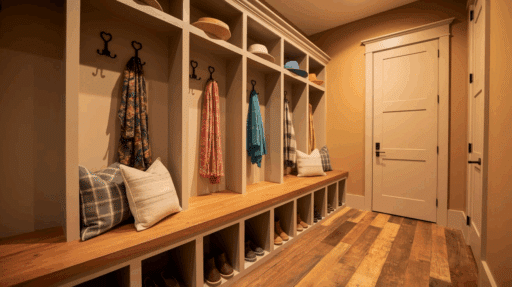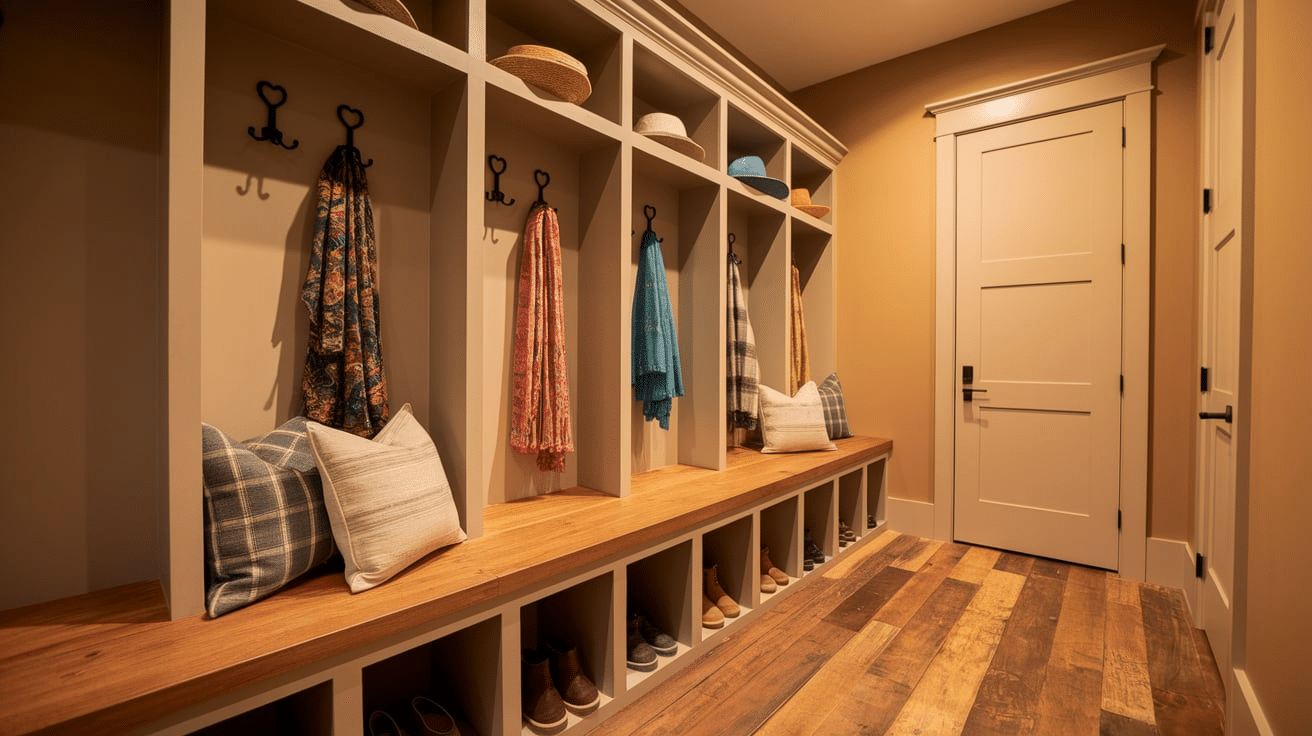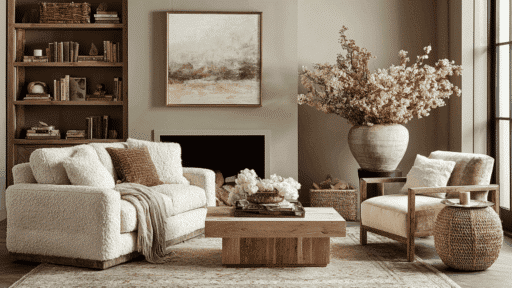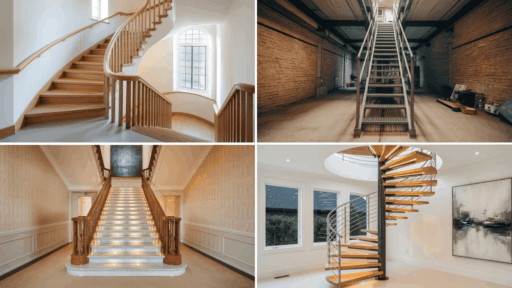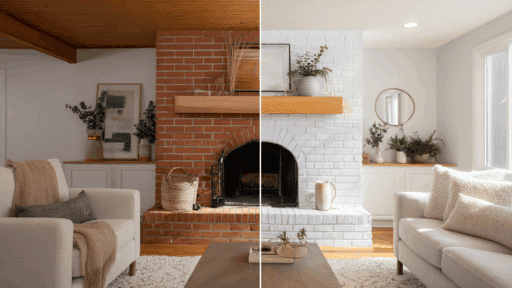Ever walked into someone’s home and wondered where they hide all the chaos? The secret might be hiding right by their front door.
A mudroom is your home’s superhero. It’s that handy space between the outside world and your clean house.
Think of it as a buffer zone where wet boots, messy coats, and school backpacks can hang out without taking over your living room.
Most mudrooms sit near the main entrance or back door. They’re like a holding area for all the stuff families drag in and out every day. Shoes get kicked off here. Jackets get tossed on hooks. Kids dump their sports gear.
The best part? A mudroom keeps the rest of your house tidy while making daily life so much easier. No more tripping over sneakers or hunting for lost mittens.
What is a Mudroom?
A mudroom is simply a transitional space designed to keep dirt, mud, and clutter from spreading throughout your home.
Traditionally, a mudroom is a “boot rooms” in farmhouses. These practical spaces helped families manage the mess that came with outdoor work and harsh weather.
Over time, mudrooms evolved from basic utility areas into organized zones that serve busy modern families. You’ll typically find them located near the main entrance, back door, or garage entry where family members naturally enter and exit the house.
This strategic placement includes storage for shoes and coats, hooks for bags and jackets, and sometimes seating for changing footwear.
What Are the Benefits of A Mudroom?
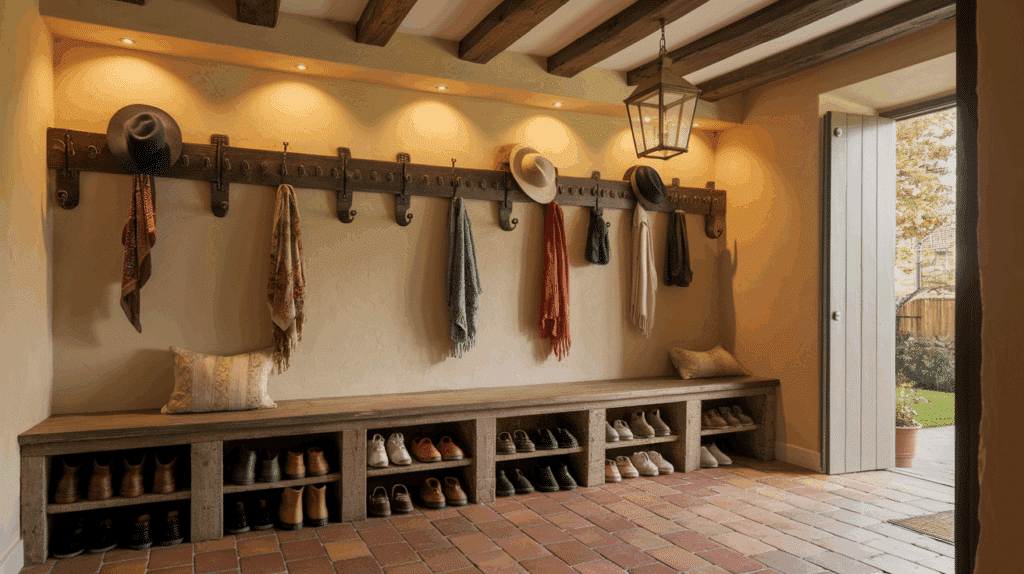
A mudroom offers far more benefits than just a place to dump dirty shoes. This hardworking space can change how your family manages daily routines while protecting your home’s cleanliness.
Here’s why adding a mudroom might be one of the most innovative home improvements you’ll ever make.
1. Keeps the Main Living Spaces Clean
No more muddy footprints trailing through your house or wet jackets dripping on furniture. A mudroom acts as a barrier that contains outdoor mess right at the entry point.
This means your carpets stay cleaner longer, and you spend less time scrubbing floors and wiping down surfaces. The space gives family members a chance to shake off rain, snow, or dirt before stepping into the main house.
2. Adds Functional Storage
Built-in cubbies, shelves, and hooks provide designated spots for everything from sports equipment to winter gear. This dedicated storage prevents items from cluttering up closets and other rooms throughout your home.
You can also add specialized storage for specific needs, like boot trays, umbrella stands, or charging stations for devices.
3. Helps with Home Organization
When everything has its place near the door, family members develop better habits about putting items away. Morning routines become smoother when backpacks, keys, and shoes are always in the same spot.
Kids learn responsibility by having their own designated cubby or hook for school items. The visual organization also makes it easier to grab what you need on your way out, reducing those frantic searches for missing items.
4. Ideal for Families and Pet Owners
If managing kids’ school gear, cleaning muddy paws, or storing hiking equipment, mudrooms adapt to your family’s specific needs.
Pet owners appreciate having a dedicated space to wipe down furry friends and store leashes, toys, and food. Families with young children benefit from the contained chaos of strollers, diaper bags, and countless pairs of tiny shoes.
What Are the Key Elements a Mudroom Should Have?

A well-designed mudroom requires specific elements that work together to create an organized and functional space. The key is balancing storage needs with durability since this area sees heavy daily traffic from family members and pets.
- Bench or seating area: Provides a comfortable spot to sit while putting on or removing shoes, especially helpful for children and elderly family members.
- Hooks and cubbies: Individual storage spaces keep each family member’s belongings organized and prevent items from ending up in piles on the floor.
- Shoe storage: Designated areas for footwear, either open shelves, closed cabinets, or boot trays, keep dirty shoes contained and organized.
- Durable flooring: Materials like tile, luxury vinyl, or sealed concrete withstand moisture, dirt, and heavy foot traffic without showing wear.
- Utility sink (optional): Perfect for washing muddy hands, cleaning sports equipment, or giving pets a quick rinse after outdoor activity.
- Lighting and ventilation: Good lighting helps family members find items quickly, while proper airflow prevents moisture buildup and keeps the space fresh.
Getting these essential components right changes a simple entryway into a hardworking hub that makes daily life smoother.
Mudroom Design Ideas
Designing a mudroom doesn’t have to be complicated or expensive to be effective. The best mudroom designs balance style with function, creating a space that works hard while still feeling welcoming.
If you’re starting from scratch or updating an existing area, these design approaches will help you create a mudroom that fits your family’s needs and your home’s style.
1. Add Seasonal Charm

Incorporating seasonal elements keeps your mudroom feeling fresh and inviting throughout the year. Simple touches, such as swapping out throw pillows on benches or adding pops of color through accessories, can change the space.
Choose a neutral base palette for permanent fixtures, then layer in seasonal colors through easily changeable items like baskets, rugs, or wall art.
2. Keep It Practical

Function should always come first in mudroom design, with every element serving a specific purpose. Focus on creating clear zones for different activities like shoe storage, coat hanging, and bag drop-off.
Easy-to-clean surfaces, clearly labeled storage bins, and accessible hooks at various heights ensure the space works for every family member from toddlers to adults.
3. Decorate on a Budget
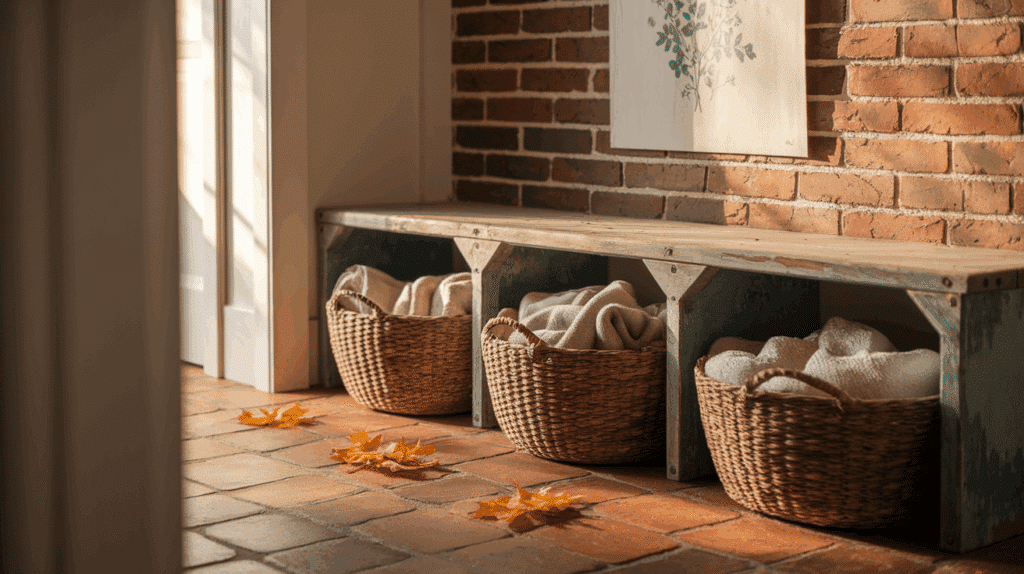
Creating a beautiful mudroom doesn’t require a considerable investment when you get creative with affordable solutions. Simple DIY projects like repurposing old furniture as storage benches or using inexpensive baskets for organization can make a significant impact.
Shop secondhand stores for unique pieces that can be refreshed with paint, or use peel-and-stick tiles for an updated floor look without the renovation cost.
4. Multi-Functional Bench Seating
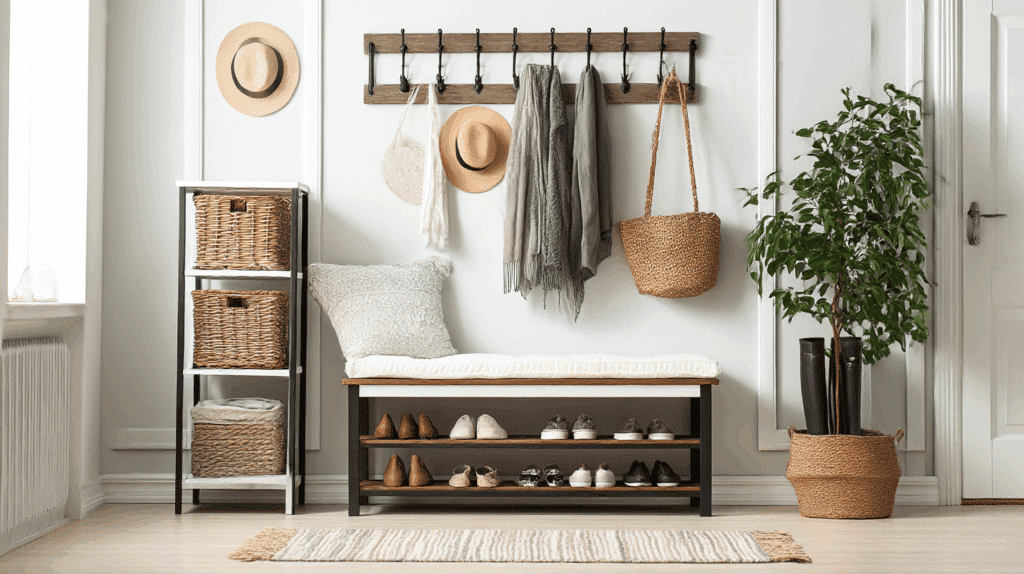
Multi-functional bench seating offers the perfect solution for maximizing space while adding practical storage to any room in your home.
By choosing a bench with built-in storage underneath, you create a dual-purpose furniture piece that doubles as a spot to sit and a place to hide shoes or seasonal gear, while you can even repurpose an old trunk or crate to save money and add character to your space.
5. Incorporate a Drop Zone or Charging Station

A designated drop zone or charging station prevents everyday essentials from cluttering up countertops and other surfaces throughout your home. Creating a small area for keys, mail, and electronics helps establish an organized routine from the moment you walk through the door.
By adding a narrow shelf with a charging outlet, you create a centralized hub that keeps essentials organized and ensures devices stay powered up and ready to use when needed.
Mudroom Organization Ideas
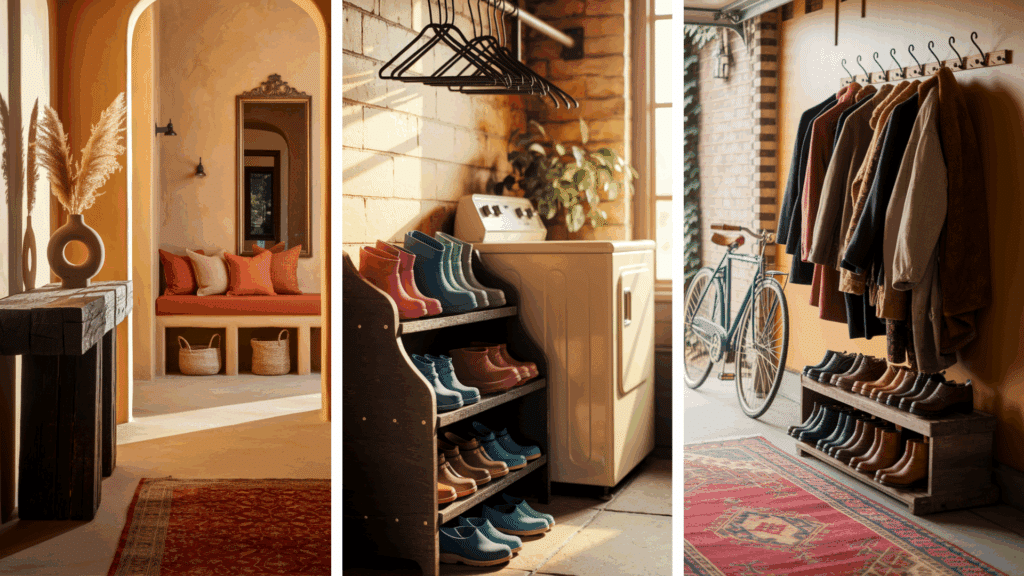
Different types of mudrooms serve different purposes depending on their location and your family’s specific needs. The key is matching your mudroom’s design and organization to how your family uses the space.
Consider which entrance gets the most traffic and what types of items need storage when planning your mudroom layout.
| Organization Idea | Organization Focus |
|---|---|
| Front Entrance Mudroom | Make a great first impression with a stylish yet highly functional setup. |
| Laundry Room Mudroom | Maximize utility using sorting bins, folding counters, and multi-use storage areas. |
| Garage Entry Mudroom | Organize gear, tools, shoes, and outerwear with sturdy storage solutions. |
These three main mudroom types can be customized further based on your home’s layout and your family’s lifestyle. The most successful mudrooms combine elements from different approaches to create a space that truly works for daily life.
Mudroom Must-Haves for Functionality
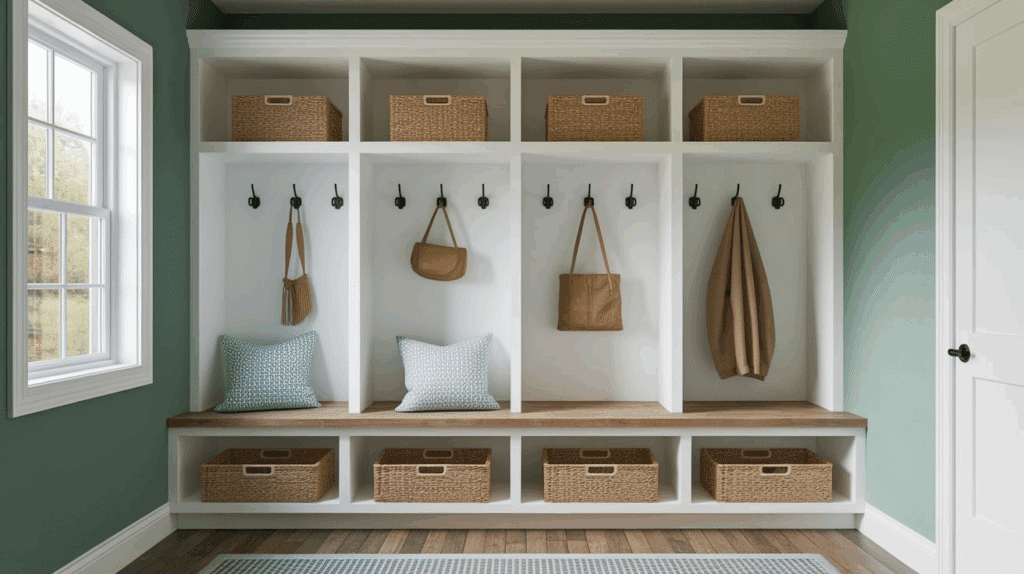
A functional mudroom relies on wise design choices that can handle daily wear and tear while keeping everything organized.
These essential features ensure your mudroom works efficiently for years to come, no matter how busy your household gets. Focus on these must-have elements to create a space that truly serves your family’s needs.
- Durable Materials: Choose materials like ceramic tile, luxury vinyl, or sealed wood that can withstand moisture, dirt, and heavy foot traffic without showing damage.
- Easy-To-Clean Surfaces: Opt for non-porous materials and finishes that can be quickly wiped down or mopped without special cleaning products.
- Smart Storage Solutions: Install a mix of open and closed storage, including cubbies, hooks at different heights, and pull-out drawers to accommodate various items.
- Good Lighting and Layout: Ensure adequate overhead and task lighting so family members can easily find items, especially during early morning or evening hours.
Conclusion
A mudroom is simply a practical transitional space that bridges the gap between the outdoors and your home’s interior. This hardworking area serves as your first line of defense against dirt, clutter, and chaos while providing essential storage for the items your family uses every day.
If it’s a small nook by your front door or a spacious room off the garage, a well-designed mudroom changes how your household manages daily routines.
With proper storage, seating, and durable materials, a mudroom becomes an organized launching pad that keeps your main living spaces clean and welcoming.
Ready to create your own mudroom? Share your mudroom ideas, challenges, or success stories in the comments below!

